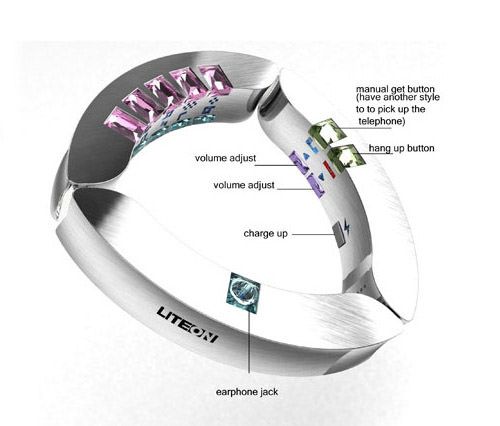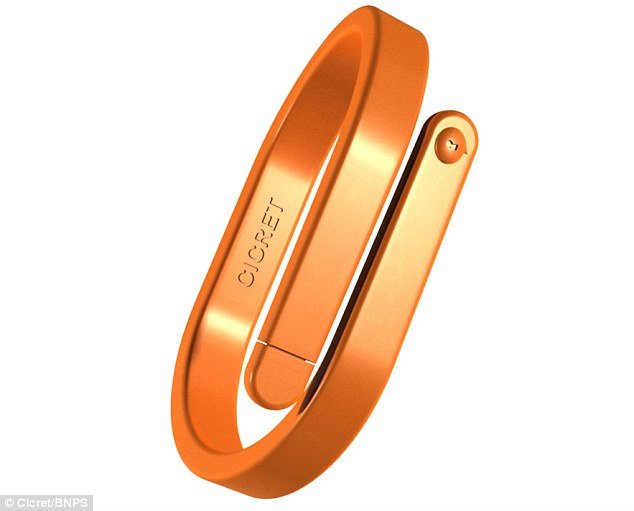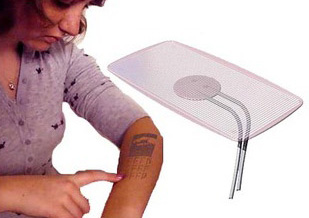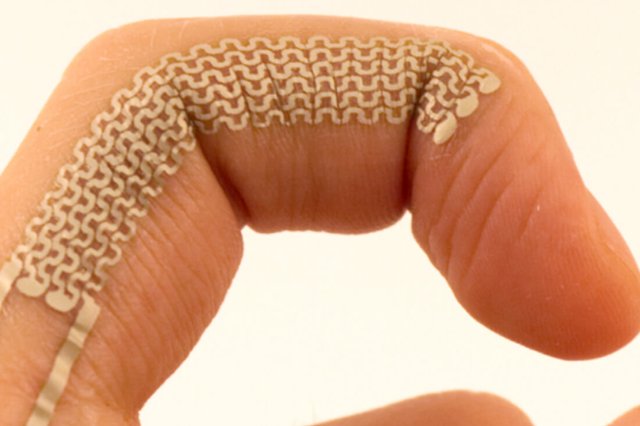bracelet mobile phone skin attached (new technology)

Date:March 4, 2015
Source:University Saarland
summary :-If a mobile phone rings during a meeting, its owner often has to dig it out before it can be muted. A more discreet method would be to decline the incoming call by pressing on one of your fingers. Computer scientists are studying the potential use of the human body as a touch sensitive surface for controlling mobile devices. They have developed flexible silicone rubber stickers with pressure-sensitive sensors that fit snugly to the skin. By operating these touch input stickers, users can use their own body to control mobile devices. Because of the flexible material used, the sensors can be manufactured in a variety of shapes, sizes and personalized designs.

If a mobile phone rings during a meeting, its owner often has to dig it out before it can be muted. A more discreet method would be to decline the incoming call by pressing on one of your fingers. Computer scientists at Saarland University are studying the potential use of the human body as a touch sensitive surface for controlling mobile devices. They have developed flexible silicone rubber stickers with pressure-sensitive sensors that fit snugly to the skin. By operating these touch input stickers, users can use their own body to control mobile devices. Because of the flexible material used, the sensors can be manufactured in a variety of shapes, sizes and personalized designs. The research team will be presenting the 'iSkin' project from March 16th to March 20th at the Cebit computer expo in Hanover.

Someone wearing a smartwatch can look at a calendar or receive e-mails without having to reach further than their wrist. However, the interaction area offered by the watch face is both fixed and small, making it difficult to actually hit individual buttons with adequate precision. A method currently being developed by a team of computer scientists from Saarbrücken in collaboration with researchers from Carnegie Mellon University in the USA may provide a solution to this problem. They have developed touch-sensitive stickers made from flexible silicone and electrically conducting sensors that can be worn on the skin.

The stickers can act as an input space that receives and executes commands and thus controls mobile devices. Depending on the type of skin sticker used, applying pressure to the sticker could, for example, answer an incoming call or adjust the volume of a music player. 'The stickers allow us to enlarge the input space accessible to the user as they can be attached practically anywhere on the body,' explains Martin Weigel, a PhD student in the team led by Jürgen Steimle at the Cluster of Excellence at Saarland University. The 'iSkin' approach enables the human body to become more closely connected to technology.
Users can also design their iSkin patches on a computer beforehand to suit their individual tastes. 'A simple graphics program is all you need,' says Weigel. One sticker, for instance, is based on musical notation, another is circular in shape like an LP. The silicone used to fabricate the sensor patches makes them flexible and stretchable. 'This makes them easier to use in an everyday environment. The music player can simply be rolled up and put in a pocket,' explains Jürgen Steimle, who heads the 'Embodied Interaction Group' in which Weigel is doing his research. 'They are also skin-friendly, as they are attached to the skin with a biocompatible, medical-grade adhesive. Users can therefore decide where they want to position the sensor patch and how long they want to wear it.'
In addition to controlling music or phone calls, the iSkin technology could be used for many other applications. For example, a keyboard sticker could be used to type and send messages. Currently the sensor stickers are connected via cable to a computer system. According to Steimle, in-built microchips may in future allow the skin-worn sensor patches to communicate wirelessly with other mobile devices. The publication about 'iSkin' won the 'Best Paper Award' at the SIGCHI conference, which ranks among the most important conferences within the research area of human computer interaction. The researchers will present their project at the SIGCHI conference in April in Seoul, Korea, and beforehand at the computer expo Cebit, which takes place from the 16th until the 20th of March in Hannover.
Love to have that new tech...
Congratulations @jakepaule! You have received a personal award!
Click on the badge to view your Board of Honor.
Do not miss the last post from @steemitboard:
Congratulations @jakepaule! You received a personal award!
You can view your badges on your Steem Board and compare to others on the Steem Ranking
Vote for @Steemitboard as a witness to get one more award and increased upvotes!